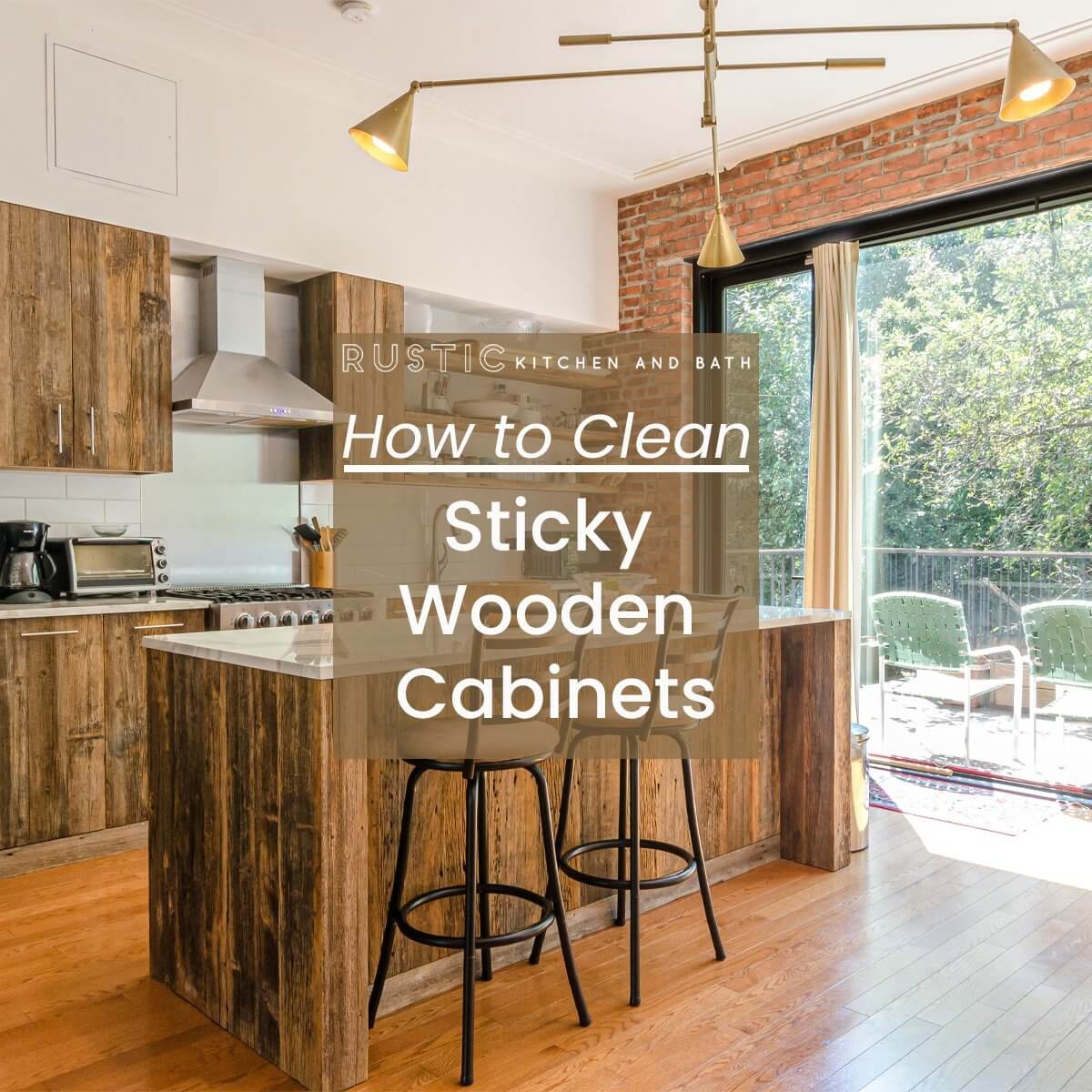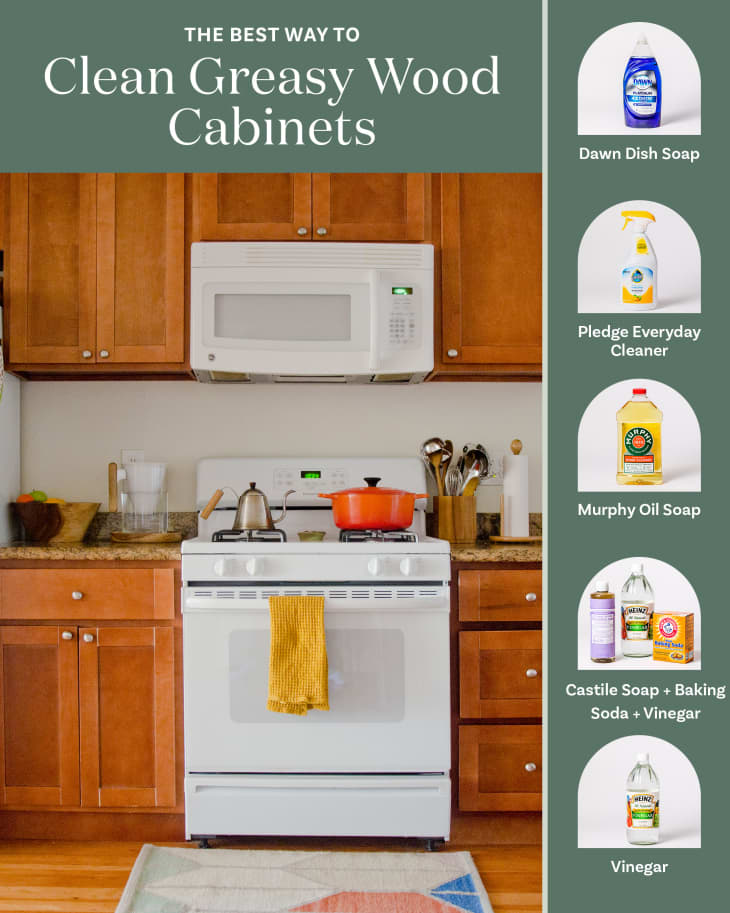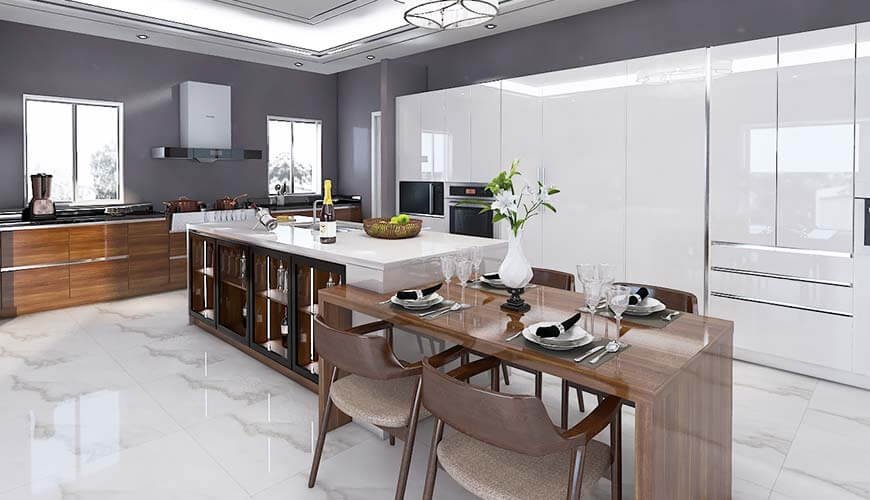Kitchen cabinets get sticky due to grease, cooking residues, and dust accumulation over time. These elements create a tacky surface.
Sticky kitchen cabinets are a common problem in many households. Cooking generates grease and steam, which cling to cabinet surfaces. Dust and dirt then adhere to this greasy layer, making cabinets sticky. Regular cleaning and maintenance can prevent this buildup.
Use mild cleaners and a soft cloth to wipe down cabinets frequently. Pay special attention to areas near the stove and oven. Proper ventilation can also reduce grease accumulation. Keeping your kitchen clean will not only improve its appearance but also its hygiene. Regular care extends the life of your cabinets and keeps your kitchen looking fresh and inviting.

Table of Contents
ToggleCauses Of Sticky Kitchen Cabinets
Sticky kitchen cabinets are annoying. They make your kitchen look dirty. Understanding the causes can help keep cabinets clean and fresh.
Cooking Residue
Cooking releases steam, oils, and particles. These settle on surfaces. Over time, they form a sticky layer. This cooking residue is a common cause of sticky cabinets.
Boiling water creates steam. Frying releases oil particles. Even baking leaves behind tiny food particles. These all contribute to sticky surfaces.
Grease Buildup
Grease from cooking builds up on cabinets. This buildup is sticky and hard to remove. It comes from fried foods, bacon, and oil splatters.
Grease also attracts dust. This makes cabinets even stickier. Regular cleaning helps prevent this buildup.
Environmental Factors
Kitchen cabinets often become sticky due to various environmental factors. These factors can significantly impact the cleanliness and maintenance of your kitchen cabinets.
Humidity Impact
Humidity plays a significant role in causing sticky cabinets. High humidity levels increase moisture in the air. This moisture can settle on the cabinet surfaces, making them sticky. In humid climates, moisture can mix with cooking oils and grease, forming a sticky residue. This residue can be challenging to remove.
Using a dehumidifier can help control the humidity levels. Keeping your kitchen well-ventilated can also reduce the stickiness caused by moisture.
Airborne Particles
Airborne particles like dust, pollen, and smoke can also contribute to sticky cabinets. These particles settle on your cabinets and mix with moisture and oils. The result is a sticky, dirty surface that attracts more dust.
Consider using an air purifier to reduce these particles. Regular cleaning of kitchen surfaces can also help minimize the buildup of sticky residues.
| Environmental Factor | Impact on Cabinets | Solution |
|---|---|---|
| Humidity | Increases moisture, causes stickiness | Use dehumidifier, ensure ventilation |
| Airborne Particles | Settle on surfaces, mix with oils | Use air purifier, clean regularly |
By understanding these environmental factors, you can take steps to keep your kitchen cabinets clean and sticky-free.
Common Cleaning Mistakes
Sticky kitchen cabinets are a common issue. Often, this is due to cleaning mistakes. Let’s explore some common errors and how they contribute to this problem.
Ineffective Cleaners
Using the wrong cleaners can leave residues. These residues attract dirt and grease. Here are some common ineffective cleaners:
- Harsh chemicals: They can damage the cabinet finish.
- Oil-based cleaners: They can leave a greasy film.
- Water-only: It doesn’t remove grease effectively.
Choosing the right cleaner is crucial. Always read product labels. Avoid products that leave residues. Opt for gentle, grease-cutting cleaners.
Irregular Cleaning
Cleaning your cabinets irregularly can cause stickiness. Dirt and grease build up over time. This makes it harder to clean later.
Here are some tips for regular cleaning:
- Daily: Wipe down with a damp cloth.
- Weekly: Use a mild cleaner to remove grease.
- Monthly: Deep clean with a gentle scrub.
Regular cleaning prevents buildup. It keeps your kitchen cabinets looking fresh. Consistency is key.

Effective Cleaning Solutions
Kitchen cabinets often get sticky due to grease, dust, and spills. Cleaning them properly can restore their shine and cleanliness. Discover effective cleaning solutions to keep your cabinets spotless and fresh.
Homemade Cleaners
Using homemade cleaners is a cost-effective and eco-friendly solution. Here are some popular choices:
- Vinegar and Water: Mix equal parts of vinegar and water. Use a spray bottle for easy application.
- Baking Soda Paste: Combine baking soda with water to form a paste. Apply it to sticky spots and scrub gently.
- Lemon Juice and Olive Oil: Mix one part lemon juice with two parts olive oil. This solution cleans and polishes the cabinets.
Commercial Products
Commercial products offer a quick and effective solution for sticky cabinets. Here are some recommended products:
| Product | Description |
|---|---|
| Murphy’s Oil Soap | Ideal for wood cabinets. It cleans and restores shine. |
| Krud Kutter | Effective on grease and grime. Suitable for painted surfaces. |
| Goo Gone | Removes sticky residue and tough stains. |
Follow the manufacturer’s instructions for best results. Always test on a small area first.
Whether you choose homemade cleaners or commercial products, regular cleaning is key. Keep your kitchen cabinets clean and free from sticky residue.
Preventive Measures
Sticky kitchen cabinets can be a real hassle. But with the right preventive measures, you can keep them clean and fresh. Here are some effective strategies to prevent sticky buildup on your kitchen cabinets.
Regular Maintenance
Regular maintenance is key to keeping your kitchen cabinets free of sticky residue. A consistent cleaning schedule helps remove grease and grime before it builds up.
- Wipe down cabinets weekly with a damp cloth.
- Use a mild detergent for deeper cleaning monthly.
- Avoid harsh chemicals that can damage the cabinet finish.
Creating a cleaning routine ensures your cabinets stay in top condition. This reduces the risk of sticky buildup.
Proper Ventilation
Proper ventilation in your kitchen can significantly reduce sticky cabinets. Cooking releases grease and moisture into the air. Without good ventilation, these can settle on your cabinets.
Here are some tips for maintaining proper ventilation:
- Install a range hood to capture cooking fumes.
- Open windows and doors to allow fresh air to circulate.
- Use an exhaust fan to remove excess moisture and odors.
By improving your kitchen’s ventilation, you minimize the chances of greasy buildup. This keeps your cabinets cleaner for longer.
| Preventive Measure | Benefit |
|---|---|
| Regular Maintenance | Prevents grime buildup |
| Proper Ventilation | Reduces grease accumulation |
Choosing The Right Materials
Choosing the right materials for your kitchen cabinets is crucial. The materials can affect how easily your cabinets get sticky. Proper selection can save you from constant cleaning. Let’s explore the best options for cabinet finishes and types.
Cabinet Finishes
Cabinet finishes play a vital role in preventing stickiness. Here are some popular options:
- Laminate: Easy to clean and resistant to stains. Laminate is ideal for busy kitchens.
- Painted: Offers a smooth surface but may require frequent touch-ups.
- Stained: Highlights natural wood grain, but can absorb grease.
- Varnished: Adds a protective layer that resists dirt and moisture.
Cabinet Types
Different cabinet types can influence stickiness based on their design and material:
| Cabinet Type | Characteristics |
|---|---|
| Solid Wood | Durable and attractive but may absorb kitchen grease. |
| Particle Board | Budget-friendly and often covered with easy-to-clean laminate. |
| Medium-Density Fiberboard (MDF) | Smooth surface that works well with paint finishes. |
| Plywood | Strong and resists warping, often used with veneers. |
Choosing the right materials helps maintain clean and sticky-free kitchen cabinets. Prioritize finishes and types that suit your cleaning habits and kitchen use.
Daily Habits For Clean Cabinets
Keeping kitchen cabinets clean is essential for a healthy home. Sticky cabinets can attract dirt and pests. Adopting a few daily habits will help maintain clean cabinets.
Wiping Spills
Spills are common in the kitchen. It’s crucial to wipe spills immediately. Use a damp cloth and mild detergent. This prevents residue buildup. Make it a habit after cooking or eating.
- Keep a cloth handy.
- Clean up spills right away.
- Use a gentle cleanser.
Using Covers
Food often splatters during cooking. Using covers can minimize this. Place lids on pots and pans. This prevents grease and food particles from reaching the cabinets.
| Cover Type | Usage |
|---|---|
| Pot Lids | When boiling or steaming |
| Splash Guards | For frying |
| Microwave Covers | Heating food |
Using covers not only keeps cabinets clean but also reduces cleaning time. It’s a simple habit with great benefits.

Professional Help
Sticky kitchen cabinets are a common issue. Sometimes, professional help is needed. Experts can provide a thorough cleaning. They can also offer preventive measures. This ensures your cabinets remain spotless and hygienic.
When To Hire
Knowing when to hire professionals is key. Here are some scenarios:
- Grease build-up is too thick to remove.
- Home remedies fail to clean effectively.
- Cabinet surfaces are damaged by improper cleaning.
- Persistent odors linger even after cleaning.
These situations call for expert intervention. Professional cleaners use specialized tools. They also apply eco-friendly products. This ensures safe and efficient cleaning.
What To Expect
When you hire professionals, you can expect a thorough job. Here’s a breakdown:
| Service | Description |
|---|---|
| Initial Inspection | Experts assess the condition of your cabinets. |
| Deep Cleaning | They use powerful cleaners to remove grease and grime. |
| Surface Restoration | Minor repairs and touch-ups are performed. |
| Preventive Measures | Application of protective coatings to prevent future stickiness. |
This process ensures your cabinets look brand new. Professional help is a worthwhile investment. It saves you time and effort. It also ensures your kitchen stays clean and healthy.
Frequently Asked Questions
Why Do Kitchen Cabinets Get Sticky?
Grease, cooking oils, and dust accumulate, making cabinets sticky over time.
How To Clean Sticky Kitchen Cabinets?
Mix vinegar and water. Wipe cabinets with a cloth. Rinse with clean water.
What Causes Grease Buildup On Cabinets?
Cooking releases grease particles that settle on cabinet surfaces, creating buildup.
Can Humidity Make Cabinets Sticky?
Yes, high humidity can cause moisture and sticky residue on cabinets.
Are Certain Foods Causing Sticky Cabinets?
Yes, foods like oils, sauces, and sugars contribute to stickiness.
Is It Safe To Use Vinegar On Cabinets?
Yes, vinegar is safe and effective for cleaning sticky cabinets.
How Often Should I Clean Cabinets?
Clean cabinets weekly to prevent buildup and maintain hygiene.
Do Painted Cabinets Get Sticky?
Yes, grease and dust can make painted cabinets sticky over time.
Can I Use Commercial Cleaners On Sticky Cabinets?
Yes, but ensure the cleaner is safe for your cabinet material.
Are Wooden Cabinets More Prone To Stickiness?
Wooden cabinets can attract grease and dust, making them sticky if not cleaned regularly.
Conclusion
Sticky kitchen cabinets are a common issue caused by cooking grease, dust, and improper cleaning. Regular maintenance and proper cleaning methods can prevent this problem. Use gentle cleaners and avoid harsh chemicals. Keep your kitchen well-ventilated to reduce grease buildup.
Maintaining a clean kitchen ensures a healthier and more enjoyable cooking environment.

